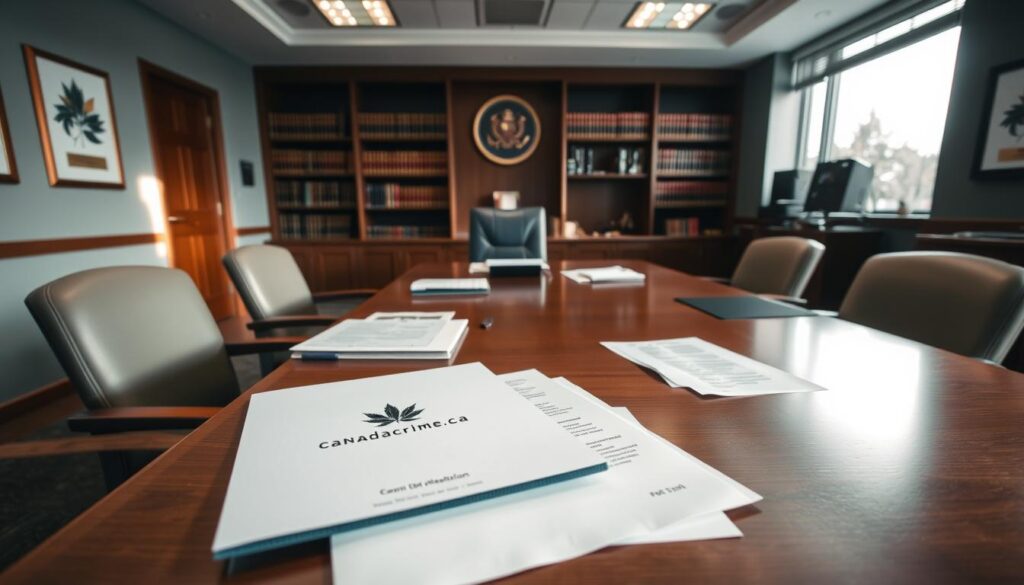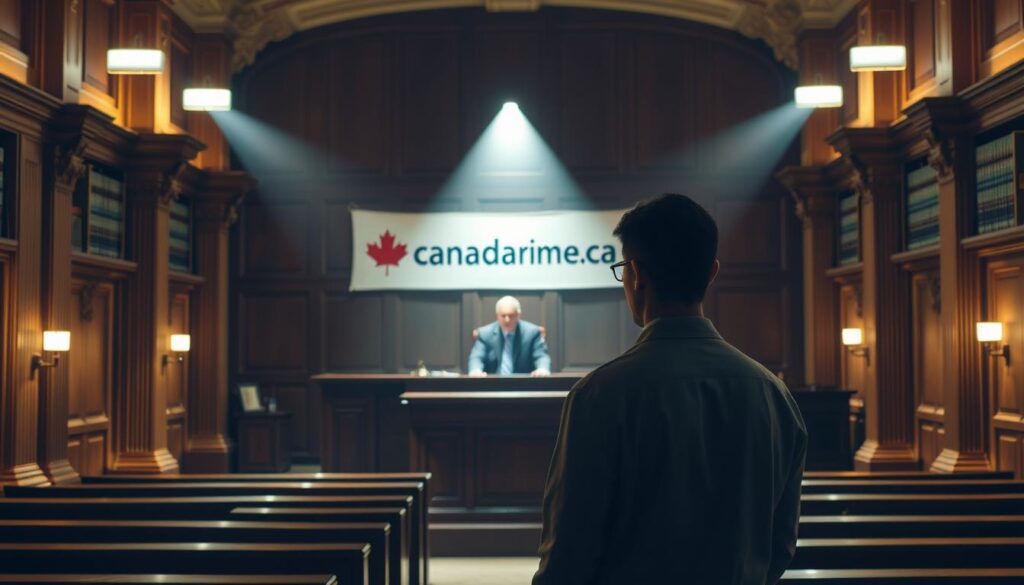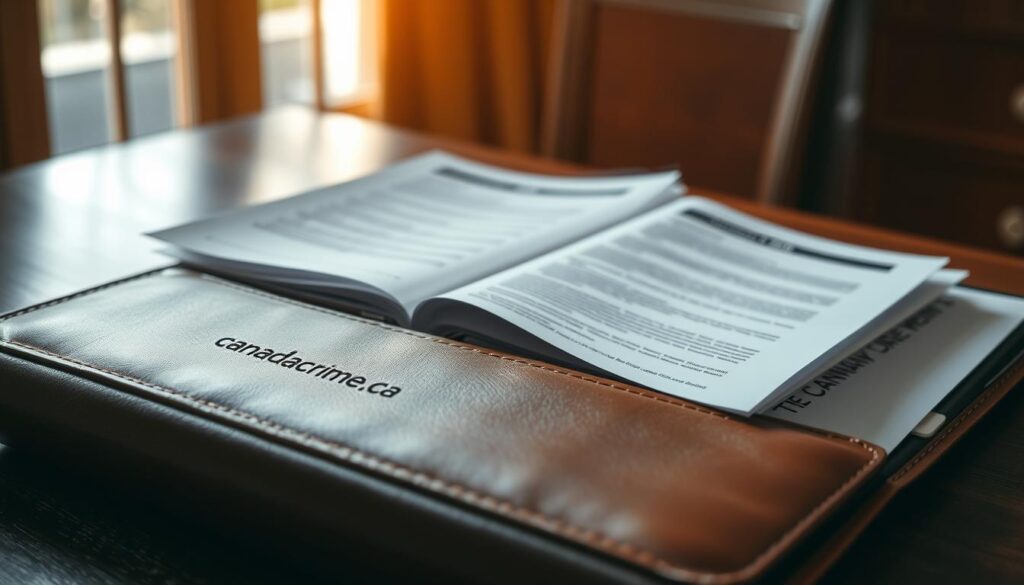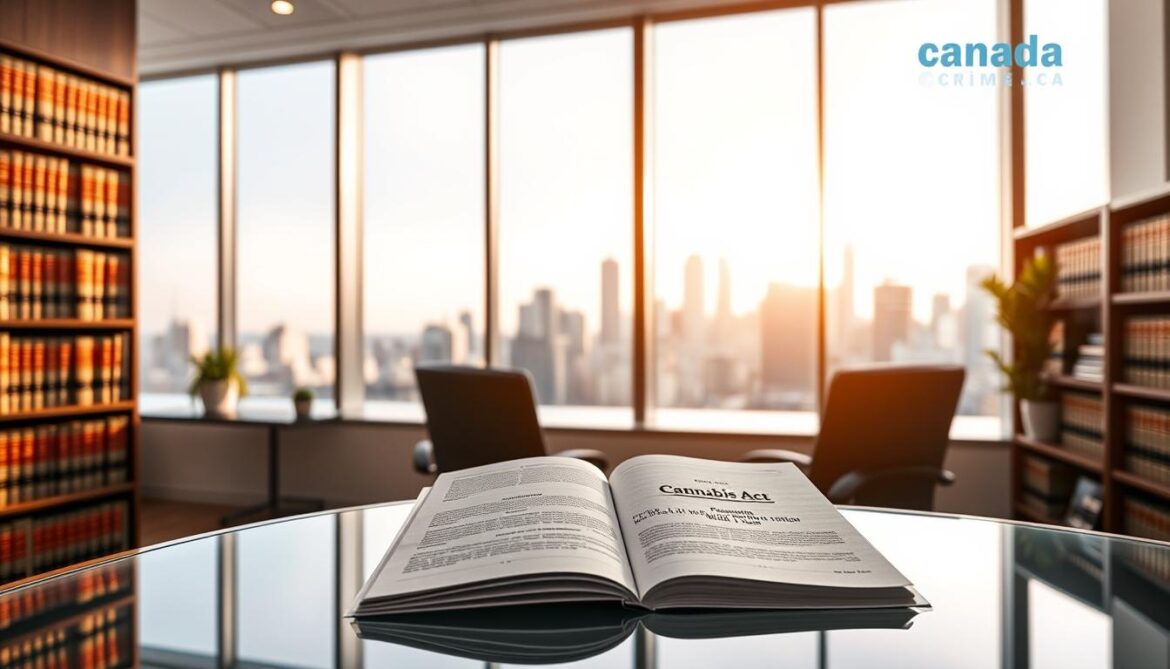In 2019, 6.5 million Canadians used marijuana. This 25% increase since legalization shows why knowing the laws is important. Understanding the legal landscape helps citizens navigate this new reality.
Canada’s legal framework for recreational cannabis began in October 2018. It aims to protect youth, eliminate criminal profits, and safeguard public health. The law also allows adults legal access to cannabis.
Possession rules differ between provinces and territories. What’s legal in one area may not be in another. These differences affect carrying limits, usage locations, and potential penalties.
Knowing these regulations helps you avoid legal issues. This guide explains federal and provincial laws, possession limits, and your rights and responsibilities. It will help you enjoy new freedoms while staying within the law.
The Cannabis Act Framework in Canada
Canada pioneered global cannabis regulation with the Cannabis Act. This framework shifts from prohibition to a regulated market approach. It balances public health concerns with legal access to quality-controlled cannabis for adults.
The Act sets clear guidelines for legal possession and use. It aims to protect public health while providing adults with safe cannabis products.
Under current cannabis regulations, adults 18 years or older can legally:
- Possess up to 30 grams of legal cannabis, dried or equivalent in non-dried form in public
- Share up to 30 grams of legal cannabis with other adults
- Purchase dried or fresh cannabis and cannabis oil from provincially-licensed retailers
- Grow up to 4 cannabis plants per residence from licensed seeds or seedlings
- Make cannabis products at home, such as food and drinks (without using organic solvents for concentrates)
These rules set clear limits for legal marijuana possession. They maintain strict controls to protect public health and safety. The framework aims to reduce illegal cannabis markets through regulated alternatives.
History and Implementation of Cannabis Legalization
Canada’s cannabis legalization journey began in 2001. The Marihuana Medical Access Regulations allowed patients to use cannabis for medical purposes.
Public attitudes towards cannabis changed over time. By 2015, legalization became a major election issue. The Liberal Party included it in their platform.
After winning, Prime Minister Justin Trudeau’s government started developing regulations. They consulted health experts, law enforcement, and indigenous communities. This approach created a balanced framework prioritizing public health.
Key Dates and Milestones
Canada’s path to cannabis legalization had several important milestones:
- 2001: Introduction of the Marihuana Medical Access Regulations
- April 13, 2017: Introduction of Bill C-45 (Cannabis Act) in Parliament
- June 21, 2018: Cannabis Act receives Royal Assent
- October 17, 2018: Legal recreational cannabis sales begin across Canada
- October 17, 2019: Cannabis edibles, extracts, and topicals become legal for sale
Legislative Process and Development
The Cannabis Act considered Canada’s international treaties and existing provincial frameworks. Lawmakers focused on protecting youth through age restrictions and marketing limits.
The Act aimed to keep cannabis away from youth and ensure public safety. It also sought to reduce the illegal market. Amendments addressed concerns from various stakeholders.
Provinces and territories could develop their own regulations within the federal structure. This allowed for regional differences while maintaining national standards for legal marijuana possession.
Cannabis Act – Possession: Legal Limits and Regulations
Canada’s Cannabis Act sets clear limits on legal cannabis possession. These rules balance personal freedom with public safety. Knowing these limits helps you stay within the law.
The Act defines different cannabis forms and their possession equivalents. These guidelines apply when buying, moving, or storing cannabis products.

Public Possession Limits
Adults 18+ (19+ in most areas) can have up to 30 grams of dried cannabis in public. This limit applies when traveling or visiting friends.
Going over this 30-gram limit can lead to serious legal trouble. Retailers can’t sell more than 30 grams in one transaction.
At home, you can store more cannabis. But keep it away from kids. Some provinces limit total amounts per household.
Dried Cannabis and Equivalent Amounts
The Act uses dried cannabis as the standard unit. It sets equal amounts for other cannabis types.
According to the Act, 1 gram of dried cannabis is legally equivalent to:
| Cannabis Form | Equivalent to 1g Dried Cannabis | 30g Public Possession Equivalent |
|---|---|---|
| Fresh Cannabis | 5 grams | 150 grams |
| Edible Products | 15 grams | 450 grams |
| Liquid Products | 70 grams | 2,100 grams |
| Concentrates | 0.25 grams | 7.5 grams |
| Cannabis Seeds | 1 seed | 30 seeds |
These rules let you mix different cannabis products legally. You can have 15g dried, 75g fresh, and 150g edibles at once.
Cannabis Products and Concentrates
Concentrates need extra care due to their high potency. They became legal in Canada in October 2019.
You can have up to 7.5 grams of concentrates in public. This limit reflects their higher THC content.
Check the dried cannabis equivalent on product packaging. This info helps you track your total amounts.
For cannabis drinks, you can have up to 2.1 liters in public. Remember, local rules may add more limits.
Provincial and Territorial Variations in Possession Laws
Cannabis possession laws differ across Canadian provinces and territories. The federal Cannabis Act sets basic rules. Each region can add stricter regulations. This creates a complex system of rules.
Provinces can change several aspects of cannabis regulation. They may raise the minimum age for possession. They can lower personal possession limits. Some add restrictions to home growing.
What’s legal in one province might be illegal in another. Travelers should know local rules to avoid fines or penalties.

Western Canada Regulations
Western Canadian provinces have different approaches to cannabis regulation. They share some common elements but differ in retail models. Public consumption rules also vary across the region.
Most western provinces keep the 30-gram public possession limit. Retail systems range from private to government-controlled. Some use a mix of both.
British Columbia, Alberta, and Prairie Provinces
Alberta has a liberal approach with many private stores. It keeps the 30-gram limit and allows four plants per home. British Columbia has both government and private stores.
Manitoba and Saskatchewan allow private retail. Manitoba bans home growing, unlike federal rules. Saskatchewan permits it but has strict rules to protect minors.
| Province | Retail Model | Public Possession Limit | Home Cultivation | Minimum Age |
|---|---|---|---|---|
| Alberta | Private | 30 grams | 4 plants | 18 |
| British Columbia | Mixed | 30 grams | 4 plants | 19 |
| Manitoba | Private | 30 grams | Prohibited | 19 |
| Saskatchewan | Private | 30 grams | 4 plants | 19 |
Northern Territories Approach
Northern territories face unique challenges in cannabis regulation. Their vast geography and remote communities create special circumstances. Each territory has developed its own approach.
Nunavut started with online sales only. It’s slowly adding physical stores. The Northwest Territories uses government-controlled stores. Yukon allows both private and public retail options.
All three territories keep the 30-gram legal cannabis possession limit. They have special rules for remote areas. These address unique access and enforcement challenges.
Research local rules before traveling north. Remote locations and territory-specific laws create a unique situation. Each territory interprets the cannabis control act differently to meet its needs.
Criminal Code Provisions Related to Cannabis Possession
Section 8 of the Cannabis Act sets clear rules for lawful cannabis possession in Canada. The Act, effective since 2018, created a new framework for cannabis regulation. It moved cannabis offenses from the Controlled Drugs and Substances Act to its own system.
The Act balances personal freedom with public safety concerns. It allows adults to possess reasonable amounts for personal use. These rules are crucial for anyone using cannabis in Canada.
The Cannabis Act works with existing criminal law. It sets possession limits, while enforcement often relies on established criminal law principles.
Section 8 of the Cannabis Act
Section 8 of the Cannabis Act bans several forms of cannabis possession. Official regulations state adults can’t have more than 30 grams of dried cannabis in public. The Act also bans knowingly possessing illicit cannabis, regardless of amount.
For those under 18, the limit is 5 grams of dried cannabis. This protects youth while avoiding counterproductive complete bans. The Act also limits plant possession in public and private spaces.
“Unless authorized under this Act, it is prohibited for an individual who is 18 years of age or older to possess, in a public place, cannabis of one or more classes of cannabis the total amount of which is equivalent to more than 30 g of dried cannabis.”
Court decisions have shaped the interpretation of Section 8 since its implementation. These rulings clarify what “public place” means and how “possession” is defined in unclear situations.
For a possession charge, prosecutors must prove knowledge and control of the substance. Courts interpret the Act’s provisions based on its goals: protecting public health and youth.
Relationship to Criminal Code
Many Criminal Code provisions still apply to cannabis-related offenses. These include rules for search, seizure, and arrest powers. The Youth Criminal Justice Act focuses on rehabilitation for young offenders.
| Possession Violation | Applicable Law | Enforcement Approach | Potential Consequences |
|---|---|---|---|
| Adult with >30g in public | Cannabis Act Section 8(1)(a) | Criminal charge | Fine up to $5,000 or imprisonment up to 5 years |
| Adult with illicit cannabis | Cannabis Act Section 8(1)(b) | Criminal charge | Same penalties as above |
| Youth with >5g | Cannabis Act Section 8(1)(c) | Youth Criminal Justice Act procedures | Diversion programs, education, community service |
| Possession near schools/children | Cannabis Act + local bylaws | Enhanced enforcement | Higher fines, possible imprisonment |
Diversion programs are often used for young people caught with cannabis. These typically include education about risks and community service instead of criminal sanctions. This approach focuses on rehabilitation.
Young offenders usually face less severe record implications than adults. Provisions allow for record suspension after specific periods. This recognizes that youthful mistakes shouldn’t lead to lifelong consequences.
Penalties for Cannabis Possession Violations
Canada’s cannabis possession limits have a graduated penalty system. The Cannabis Act sets clear consequences for exceeding legal amounts. Penalties vary based on age, amount possessed, and offense frequency.
Adults over 18 who exceed limits face two charge types. Indictable offenses can lead to five years imprisonment. Summary convictions may result in fines up to $5,000 or six months in jail.
Young offenders are processed under the Youth Criminal Justice Act. This approach focuses on rehabilitation rather than punishment. Organizations violating limits face court-determined fines.

Administrative Penalties and Ticketing
Minor violations usually result in administrative penalties, not criminal charges. This approach is similar to traffic violations. It allows resolution without creating a criminal record.
Officers have discretion for small overages. A 32-gram possession might lead to a ticket instead of arrest. These tickets typically require fine payment within a set timeframe.
Administrative penalties help maintain compliance while avoiding court burdens. They align with goals to protect public health and reduce prohibition costs. The federal government sets baseline penalties, but provinces can implement their own systems.
Provincial Offenses and Fines
Fines for exceeding possession limits vary across Canada. Ontario’s fines range from $200 to $1,000 for first offenses. British Columbia uses a tiered system with fines up to $2,000.
Provincial tickets don’t usually result in criminal records. Some provinces keep registries of cannabis infractions. Repeat offenders may face higher fines or criminal charges.
| Province | Minor Overage Fine | Significant Violation Fine | Payment Period | Repeat Offense Consequence |
|---|---|---|---|---|
| Ontario | $200-$500 | $500-$1,000 | 30 days | Doubled fines |
| British Columbia | $200-$400 | $400-$2,000 | 14 days | Court appearance |
| Alberta | $300-$500 | $500-$2,000 | 30 days | Criminal charges possible |
| Quebec | $250-$750 | $750-$1,500 | 30 days | Mandatory education program |
Impact on Licensing and Privileges
Cannabis violations can affect various licenses and privileges. In some provinces, infractions may lead to driver’s license scrutiny. Ontario and Quebec may suspend licenses for cannabis-related offenses.
Professional licensing bodies often review cannabis violations. Healthcare and legal professionals may face regulatory college assessments. These reviews check for impaired judgment or disregard for legal obligations.
Cannabis violations can complicate international travel, especially to the United States. U.S. border officials may deny entry based on Canadian cannabis infractions. This applies even if the violation didn’t result in criminal charges.
Cannabis Possession in Specific Contexts
Knowing cannabis possession rules in different situations is key to following Canadian law. These rules are stricter in certain contexts, like vehicles. Understanding these regulations helps avoid unintended violations and penalties.
The Cannabis Act covers possession in various settings. It focuses on areas where public safety is a concern. These include vehicle transport, workplaces, and international travel.

When traveling with cannabis in Canada, be aware of different local rules. Some provinces have stricter controls than federal laws. These may affect how you can transport or use cannabis.
Vehicle and Transportation Regulations
Vehicle cannabis rules are crucial to understand. They aim to prevent impaired driving and keep cannabis out of reach. Breaking these rules can lead to serious penalties.
Most provinces treat cannabis in cars like open alcohol. Even with legal amounts, wrong storage while driving can result in fines. Specific rules vary by province but follow similar ideas.
Ontario and Quebec require unopened packaging during transport. Other areas may allow opened packages with specific storage rules. Always check your province’s regulations before traveling with cannabis.
Storage Requirements While Driving
When driving, store cannabis in a sealed container out of reach. This usually means keeping it in your trunk or a separate compartment. It should be inaccessible to both driver and passengers.
For cars without trunks, store cannabis far from the driver and passengers. Some provinces require unbroken seals on original packaging during transport.
Impaired Driving Laws and Consequences
Canada has toughened its impaired driving laws since cannabis legalization. Police now use special tests to detect cannabis use. These complement existing alcohol impairment checks.
Cannabis-impaired driving penalties are severe, like those for alcohol. First offenses often mean big fines. Repeat or serious violations can lead to jail time.
Impaired driving laws cover more than just cannabis. They include substances like LSD, heroin, cocaine, and magic mushrooms. The law addresses impairment from all substances equally.
Medical Cannabis Possession Framework
Medical cannabis in Canada follows a special system for patients with health needs. It’s different from recreational cannabis rules. This system offers higher possession limits for those with medical needs.
Medical cannabis users can have more than recreational users. Your limits depend on your doctor’s authorization. This shows Canada’s balanced approach to cannabis regulation.

The Cannabis Act ensures patients can access their medicine while maintaining controls. Your rights depend on having proper authorization and documentation. Always carry these with you.
You can get medical cannabis from licensed producers or grow it yourself. This system gives you options while keeping legal oversight.
Authorization and Documentation Requirements
To legally have medical cannabis, you need proper authorization. First, talk to a qualified doctor about your condition. They’ll decide if cannabis might help you.
Your possession limits are different from recreational ones. You can have up to a 30-day supply or 150 grams, whichever is less. For example, if you use 2 grams daily, you can have 60 grams in public.
Your documents are your legal protection. Without them, you could face penalties. Always keep your paperwork for personal cannabis possession.
| Type of User | Maximum Public Possession | Documentation Required | Purchase Source |
|---|---|---|---|
| Recreational | 30g dried cannabis (or equivalent) | Government-issued ID (age verification) | Licensed retailers only |
| Medical | 30-day supply or 150g maximum | Medical authorization + registration documents | Licensed producers or personal cultivation |
| Medical (traveling) | 30-day supply or 150g maximum | Medical authorization + travel documentation | Must be obtained before travel |
Healthcare Provider Authorization Process
A doctor or nurse practitioner must assess you in person. They’ll complete a medical document like a prescription. This document will state your daily cannabis amount and usage period.
Not all doctors feel comfortable authorizing cannabis. It’s their choice, and many are careful about it. You may need to explain why you think cannabis could help you.
After getting authorization, register with a licensed producer or Health Canada. This completes your legal authorization process.
Legal Documentation While in Possession
Always carry specific documents when you have medical cannabis. This includes your registration certificate or production registration. Carry photo ID with your medical documents.
Police may ask to see both to check your right to have more than recreational limits. These documents protect your rights when traveling in Canada.
Remember, you can’t travel internationally with cannabis, even with medical authorization. Local rules may affect where you use medical cannabis. Your possession rights stay the same nationwide with proper documents.
Your Legal Rights During Cannabis-Related Law Enforcement Encounters
Knowing your rights under the Cannabis Act can prevent legal troubles. The rules for police interactions have changed since cannabis legalization in Canada. Understanding these changes helps you handle encounters confidently.
Police must follow specific protocols when dealing with cannabis-related situations. These protocols balance public safety with your constitutional rights. The Cannabis Act protects responsible users while addressing illegal activities.

The “Good Samaritan” provision is a key protection in the Cannabis Act. It shields you from possession charges if you seek help for someone’s cannabis-related medical emergency. This applies when evidence is found due to your assistance.
Search and Seizure Protections
The Canadian Charter protects you from unreasonable search and seizure, even for cannabis. Police can’t search you or your property without proper legal justification. They need more than just suspicion for cannabis possession.
In many parts of Canada, the smell of cannabis alone isn’t enough for a search. This is a change from pre-legalization practices.
“No person who seeks emergency medical or law enforcement assistance because that person, or another person, is suffering from a medical emergency is to be charged or convicted of an offence under subsection 8(1) if the evidence in support of that offence was obtained or discovered as a result of that person having sought assistance or having remained at the scene.”
Keep cannabis in its original packaging with receipts to prove legal purchase. Medical users should always have their documentation ready to show authorized possession.
Reasonable Grounds Requirements
Police need “reasonable grounds” for a cannabis-related search. This means more than suspicion but less than absolute certainty. Officers must have specific facts suggesting a Cannabis Act violation.
Valid grounds might include evidence of possessing more than the legal limit. Distributing without proper authorization is also a valid reason. Simple possession within legal limits isn’t grounds for further investigation.
Refusing Unreasonable Searches
You can refuse searches without reasonable grounds. If an officer lacks clear justification, politely say, “I do not consent to a search.” Don’t physically resist if they proceed anyway.
State your objection clearly and document the interaction if possible. Address any rights violations through proper legal channels later.
If you feel your rights were violated, seek dispute resolution. This can be done through provincial cannabis authorities or the court system. The court is the proper place to challenge improper searches.
Conclusion
Knowing legal marijuana possession rules is crucial for Canadians. The Cannabis Act sets clear guidelines for responsible adult use. It protects public health while allowing cannabis enjoyment.
The 30-gram public possession limit is your basic guide. Legal amounts vary by product type. One gram of dried cannabis equals 5 grams fresh or 15 grams edibles.
Location matters for cannabis laws. Each province has unique rules for use and transport. Research local regulations before traveling to avoid penalties.
Medical users have limits based on their authorization. Always carry proper documentation to distinguish medical from recreational cannabis.
The Cannabis Act protects youth and promotes public health. It also aims to reduce illegal market activity. Following possession limits helps support Canada’s cannabis policy.
Cannabis laws are always changing. Stay informed about current regulations in your area. This helps you remain compliant with legal marijuana possession requirements.

